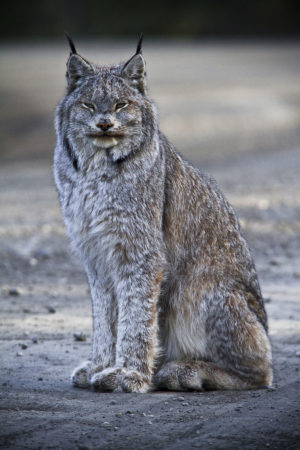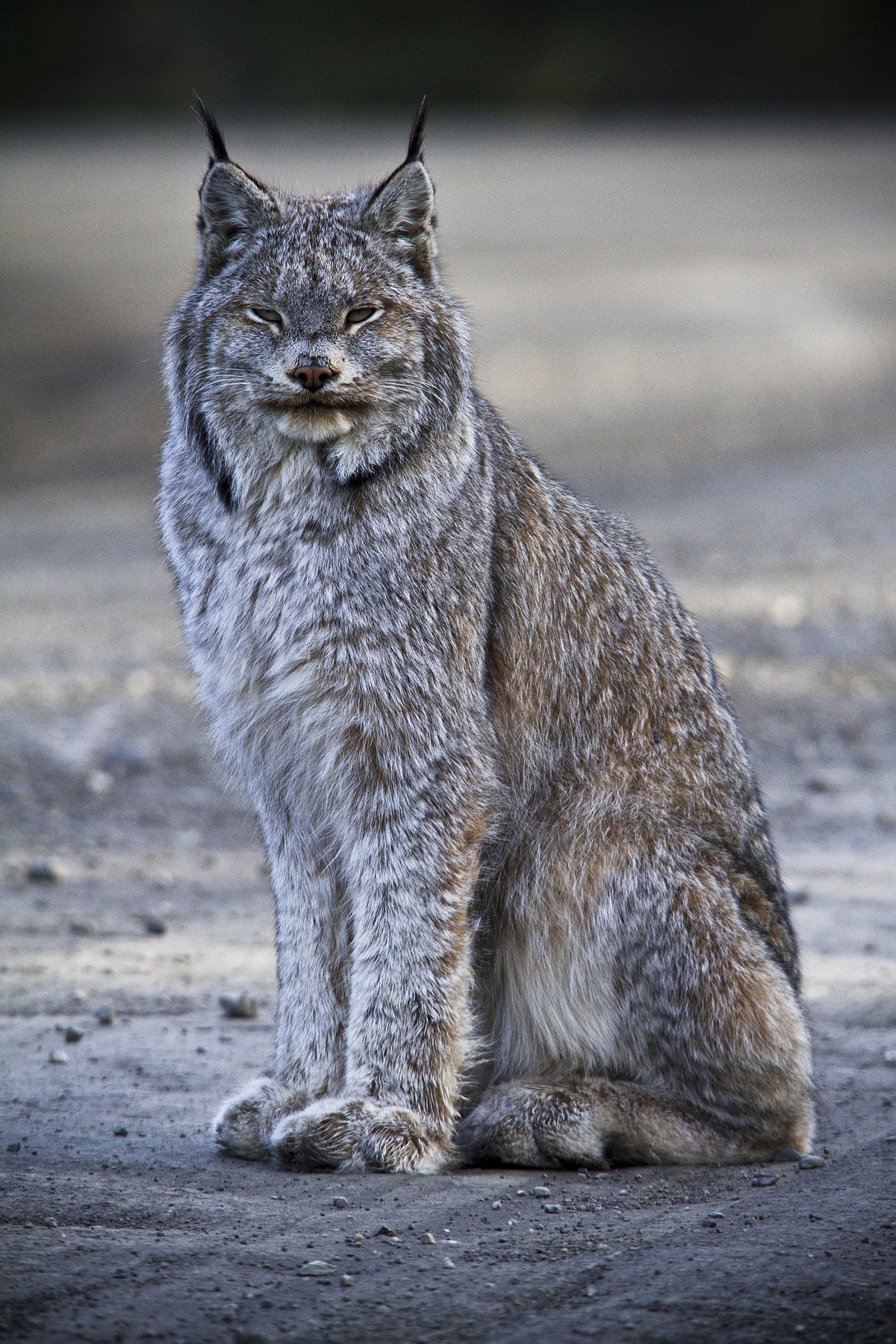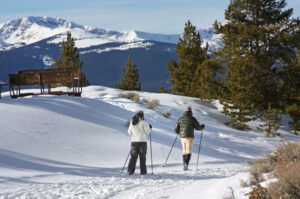By Tina Mitchell
Deep snowpack in Colorado’s snowy, high-altitude coniferous forests chases most humans to lower altitudes during the winter. (At least during a good winter.) Yet the wildlife denizens of the deep snows – Canada lynx and snowshoe hares – continue their delicate dance unabated. Lynx feed primarily on snowshoe hares. More so than any other Colorado predator, lynx numbers cycle in tandem with snowshoe hares’ boom-and-bust pattern. With hares in abundance, lynx produce large litters and kitten survival rates bound upward. Eventually, the hares outstrip their food supply; their numbers plummet, followed by a drop in lynx numbers. Other predators switch to different prey, but not the lynx. A naturalist wrote in 1911 “[the lynx] lives on Rabbits, follows the Rabbits, thinks Rabbits, tastes like Rabbits, increases with them, and on their failure dies of starvation in the unrabbited woods.”
Resembling a gigantic housecat with a stubby tail, the Canada lynx is gray with faint dark spots on its belly and surprisingly long legs. Its ears feature black edges and magnificent tufts nearly as long as the ears themselves. Covered in a thick layer of fur, its large round feet act like snowshoes to help it travel on top of the deep snow that blankets its preferred habitat much of the year.
[InContentAdTwo]
Once native to Colorado, Canada lynx had disappeared from the state by the late 1970s due to hunting and fur trapping, poisoning, logging, motorized vehicles and development. In 1999, a year before the lynx was listed as threatened under the federal Endangered Species Act (ESA), Colorado Parks and Wildlife (CPW) launched the Colorado Lynx Reintroduction Program. Because of Colorado’s isolation from the nearest lynx populations (Montana, northern Wyoming), reintroduction seemed to be the only viable option to return these lanky cousins of bobcats to Colorado. Over a seven-year period, CPW introduced 218 radio- and satellite-collared wild lynx from Canada and Alaska into the remote San Juan Mountains. These cats slowly established breeding populations in the San Juans, even expanding into Summit County and other parts of Colorado’s high country. As of 2017, estimates of the state’s population ranged widely, from 50 to 250.
 Even at the high end of that range, lynx are challenging to track and rarely observed casually. In late 2016, a pair of Canada lynx traveled alongside a driver on U.S. 550 outside of Silverton. Two weeks later, a lone lynx wandered through the Purgatory Resort near Durango, winding among shocked snowboarders and skiers who stopped to take videos. (Unfortunately, this cat was likely ill or starving, since it was found dead several days later.) Such reports aside, very few people have seen – or will ever see – a lynx in the wilds of Colorado. Yet that doesn’t diminish their appeal and allure.
Even at the high end of that range, lynx are challenging to track and rarely observed casually. In late 2016, a pair of Canada lynx traveled alongside a driver on U.S. 550 outside of Silverton. Two weeks later, a lone lynx wandered through the Purgatory Resort near Durango, winding among shocked snowboarders and skiers who stopped to take videos. (Unfortunately, this cat was likely ill or starving, since it was found dead several days later.) Such reports aside, very few people have seen – or will ever see – a lynx in the wilds of Colorado. Yet that doesn’t diminish their appeal and allure.
During the waning weeks of the Obama administration in 2016, the U.S. Fish and Wildlife Service (USFWS) concluded that resident lynx populations would likely not survive until 2100 in all areas that currently support them. Yet in January 2018, the Trump administration announced that it planned to remove the Canada lynx from the endangered species list. Although officials admitted they could not be certain of the lynx’s fate in its sprawling range across Maine, Minnesota, Montana, Colorado, Idaho and Washington, they expressed confidence the animals would survive through 2050.
Not everyone agrees with this assessment, though. Non-government-affiliated conservationists worry that the species’ most important requirements – snow, space, hares and habitat connectivity – will be increasingly threatened by both human activities encroaching on its habitat and a warming climate. For example, the lynx’s disproportionately large paws give it a strong competitive advantage over other carnivores in the deep, fluffy snow it frequents. Yet decreased snowpack means more competition from fellow predators for prey.
Despite such concerns, the Canada lynx is now recommended for delisting under the ESA. While this recommendation does not immediately remove the current ESA protections for the Canada lynx, the decision does trigger a process to end them. First USFWS must publish a proposed rule in the Federal Register, then take public comments and draft a final decision. As of this writing, no proposed rule has yet appeared in the Federal Register. But it seems inevitable that one will, sooner rather than later. And once the proposed rule is posted, the public comment period could be as short as 30 days.
Don’t blink. The iconic Canada lynx’s existence in Colorado may depend on your vigilance.
After a quarter-century in Colorado, Tina and her family recently migrated to Southern California, where she’ll spend the next quarter-century trying to remember that the mountains lie to the east.
“The Natural World” column is sponsored by Ann and Henry Klaiman.



